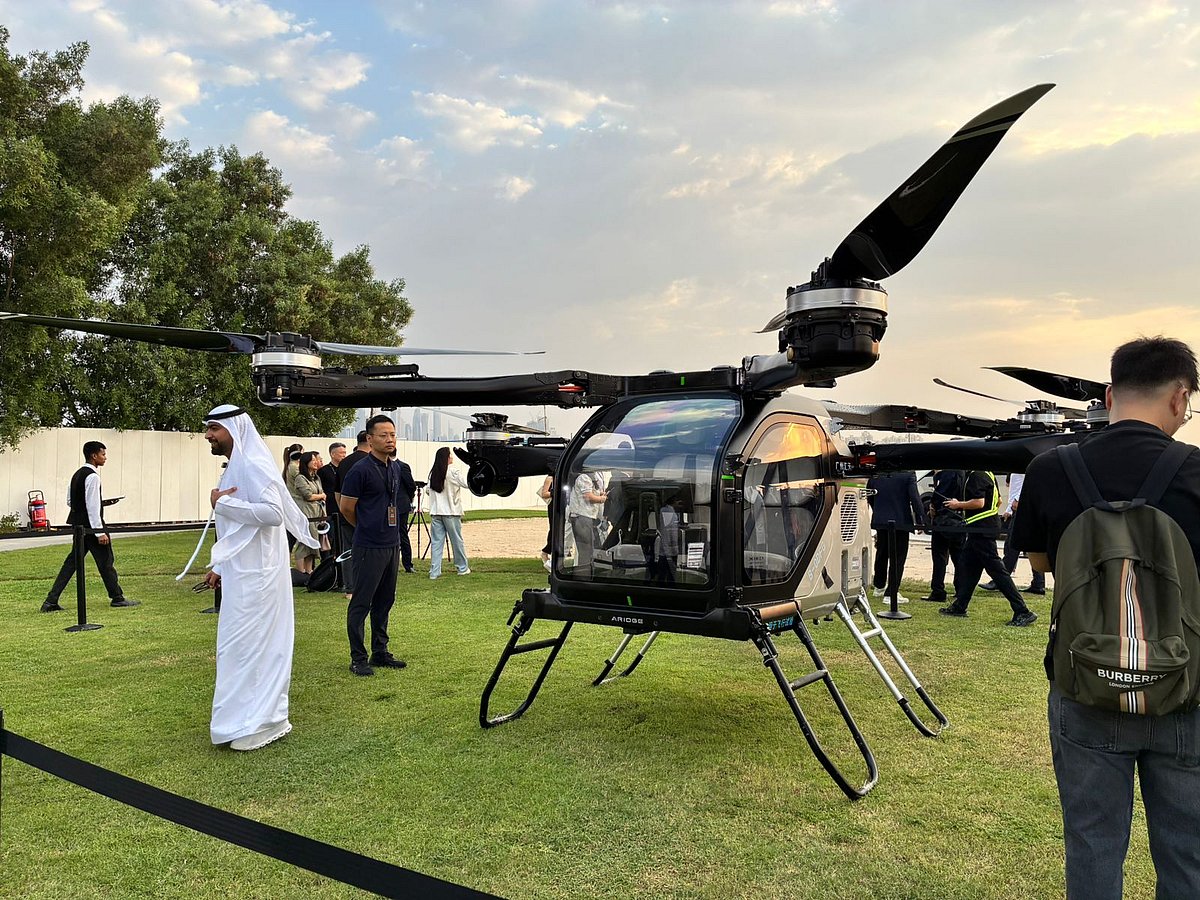Chinese flying car maker Aridge completes first manned test in Dubai, secures 600 orders
Xpeng Aeroht rebranded as Aridge, plans consumer sales in Middle East by 2027

Dubai: Flying cars have taken another step closer to reality in the Gulf. Xpeng Aeroht, a Chinese flying car maker that recently rebranded as Aridge, conducted its first Middle East manned flight in Dubai today.
It also announced 600 new orders from GCC companies, bringing its global pre-orders to over 7,000 units.
Aridge’s land aircraft carrier is a modular flying car concept where a ground vehicle carries and recharges a separate, two-person electric vertical takeoff and landing (eVTOL) aircraft.
Simply put, an electric truck that carries an eVTOL in its boot. The detachable air module fits into the trunk of a “mothership” vehicle, allowing seamless transitions between driving and flying.
The aim is to simplify personal air travel. The aircraft offers both automatic and manual piloting modes. While overseas pricing hasn't been announced, in China, the price is under RMB 2 million (approx. Dh1,030,000 based on current exchange rates).
According to Michael Chao Du, CFO and Vice President of Aridge, the orders for 600 aircraft came from the UAE’s Ali & Sons Group, Qatar’s Almana Group, Kuwait’s AlSayer Group, and the Chinese Business Council in the UAE — marking the largest bulk purchase of flying cars outside China. Aridge’s consumer sales in the Middle East are expected to begin as early as 2027.
“The Middle East is both a strategic market and a valued partner," said Du. “With its growing role in global innovation and forward-looking policies, the region is the ideal launchpad for our globalization journey."
The UAE and other GCC countries, including Saudi Arabia, have invested heavily in technology that makes eVTOL flying air taxis a possibility. American eVTOL manufacturers Archer and Joby are due to launch commercial air taxi services in Abu Dhabi and Dubai, respectively, by 2026.
Du also confirmed to Gulf News that the company is actively working in compliance with regional aviation authorities, including the GCCA and DCAA, to advance airworthiness certification and related regulatory processes. "Similar collaborations with other GCC countries will also be launched progressively," he said.
An eVTOL in the trunk of your aircraft?
The land aircraft carrier is now entering mass production. Moreover, deliveries are set to begin in 2026, supported by the world’s first intelligent flying car factory in Guangzhou, China, which can produce a whopping 10,000 units a year, according to Du.
Aridge has already achieved regulatory progress, securing a special flight permit from the UAE’s General Civil Aviation Authority in September. In China, the company’s Type Certificate application was accepted in March 2024, with Production Certification following in May 2025.
The company operates an intelligent factory in Guangzhou capable of producing 10,000 units annually. With a team of 1,200 R&D specialists and over $600 million invested, Aridge has filed 965 patents globally and developed seven generations of flying vehicles.
Du said the company is also developing the A868 - a high-speed, long-range flying car that integrates full tiltrotor technology and a hybrid electrical powertrain system.
With a range of over 500 km, a top speed exceeding 360 km/h, and a six-seat cabin, the A868 expands Aridge's capabilities into business travel and mobility services.
Commenting on use case scenarios, Du said, "This product is designed to empower personal flight, allowing individuals to experience the joy and freedom of flying. It is easy to learn, safe to operate, and built for everyday users. In addition, it can also be applied in public service sectors such as emergency response and patrol operations."
How does it work?
The aircraft is designed to make flying as easy as driving. The air module features a large, user-friendly smart display in place of complex aircraft dashboards.
It offers both automatic and manual flight modes. In automatic mode, pilots can plan routes, take off, and land with one touch, supported by 3D vision, alerts, and landing assistance.
In manual mode, Aridge's single-stick control system, the first for a flying vehicle, combines six operations into one joystick for one-handed piloting.
With safety at its core, Aridge's advanced flight control system allows pilots to override autonomous functions while maintaining stable flight within safe parameters.
The air module includes fully redundant systems for propulsion, power, communications, and flight control, with automatic rotor failure response in milliseconds.
Are flying cars a privilege for a select few? "We believe that as technology advances and the supply chain continues to improve, costs will naturally decrease, allowing more people to enjoy the convenience of low-altitude mobility. Our goal is to make flying accessible to everyone, not to keep it as a privilege for a few," said Du.
Network Links
GN StoreDownload our app
© Al Nisr Publishing LLC 2025. All rights reserved.